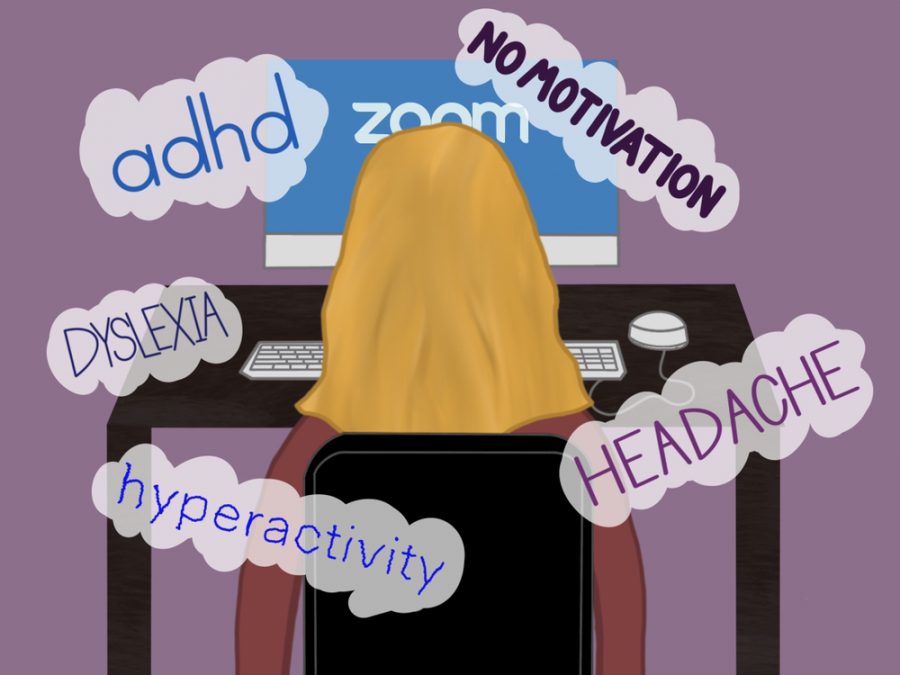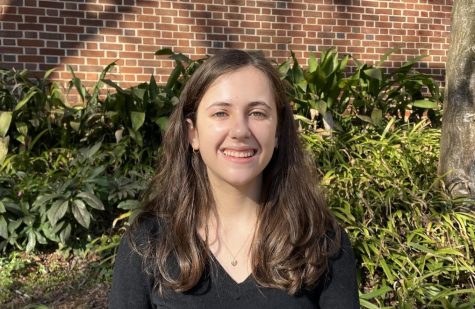Virtual school challenges students with learning disabilities
Students with learning disabilities have to combat many mental challenges with virtual learning.
September 24, 2020
A student sits at their desk, eyes strained from looking at her computer. While struggling to keep up with assignments learning virtually, there is another obstacle holding her back: her learning disability.
Not only does she not have a physical interaction with her teachers, she must also work harder to understand and complete her school work. Difficulty staying focused, a lack of motivation, and headaches are only some of the effects shown from long stints of virtual learning.
In students like sophomore Ava Likins who have learning disabilities such as attention-deficit/hyperactivity disorder (ADHD) and dyslexia, these effects may be amplified.
Grady has been using the Zoom platform for all online classes. Likins, who was recently diagnosed with ADHD, believes the speed of learning has become much faster because of Zoom.
“I think the pace of an online class is faster,” Likins said. “The teachers don’t stop to take breaks as much as they would in a regular classroom.”
Some students with learning disabilities feel as though their physical side effects have worsened due to virtual learning. Sophomore Catherine Sands battles with dyslexia and believes her symptoms are more pronounced now.
“Headaches have always been a thing I’ve struggled with,” Sands said. “They do get a little worse online because you’re staring at a computer, and that makes everyone’s head hurt, so my pain is just a little more amplified.”
In a traditional classroom, teachers are expected to adjust to the needs of students with learning disabilities. Likins thinks teachers are having a harder time providing original help in an online environment.
“Online classes aren’t very interactive, so it can be harder for teachers to check in on us,” Likins said. “I feel like a lot of kids have ADHD, so teachers should be more aware of it for the sake of all the kids who have it. Teachers just have to be patient and realize that not everyone is going to get it on the first try.”
Special education teacher Kimberly Walker Portee has struggled to explain to her students how to operate the different functions of Zoom. Zoom allows students to give reactions such as raising your hand or giving a thumbs-up, and Walker Portee believes these functions are very useful.
“Because Zoom was new for everyone, there were some things that I had to learn and that the parents had to learn,” Walker Portee said. “I think Zoom is great, but for students with disabilities, it may be a little challenging because if I want them to have remote control access, they have to be able to accept that or send me a request. There are things like that that I thought were great because they can still interact, but when I realized that there were different pop-ups or extra steps that they had to do, I had to figure out how to teach them this.”
Despite Zoom’s challenges, there are some activities that can be simplified through the platform. Zoom allows teachers to share their screens and teachers can see individual students’ reactions to certain assignments.
“I think it’s easier when we show them short snippets or short videos,” Walker Portee said. “We can then question them in a yes or no manner or by telling them to put their thumbs up or down.”
Some students with learning disabilities are choosing to look on the positive side as they adjust to new norms.
“It is less awkward online,” Sands said. “At school, I would have to be pulled out of my regular class for certain tests, and it would be some teacher I hadn’t really met before that would come into the class and shout my name over everybody. It felt like everyone was looking at me and wondering where I was going, but they don’t have to do that for online.”
While online learning may be difficult, Walker Portee believes for the safety of all students during the COVID-19 pandemic, it should continue.
“I want us to be safe, and I think it’s so important that we be safe.” Walker Portee said. “We have to realize many students with disabilities take medications that wear on their immune system. And if teachers get sick, we can’t teach from the grave.”










Hollie Hutchison • Sep 26, 2020 at 1:50 pm
Great article!